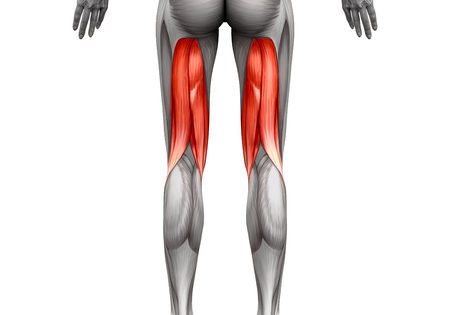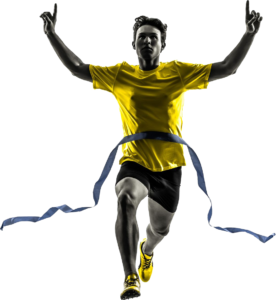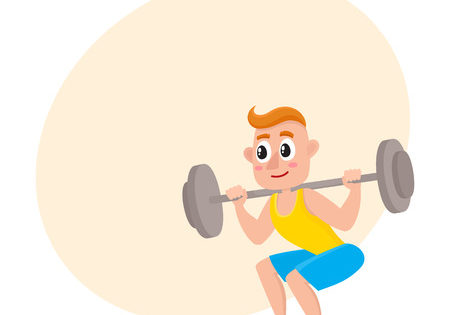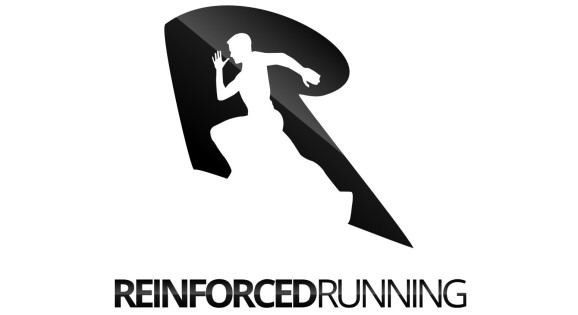One Move to Better Running Form and Fewer Injuries
Let me ask you: What does good running form look like?
Do you want big long strides to cover mass distance or will a short stride get you to the finish line?
It seems obvious, right?
Long strides > Short Stride
Most runners would agree.
HOWEVER, a runner who pushes off of their back leg to stride as far as possible is putting themselves at risk.
Yes, they cover a significant distance as both legs will leave the ground.
But, The front foot lands well in front of their center of gravity. The heel hits the ground first and momentum to forces them to continue to push forward.
If you watch most runners on the street, you will see this continuous cycle. Pushing, driving, and landing in front of the body’s center of gravity.
A long stride may look beautiful and fast, but is it better for your long-term health?
Pushing off and overstriding can cause many running injuries:
- IT band syndrome
- Shin Splints
- Runners Knee
- Hip Flexor straight
Get a Free Guide on how to improve your running form
Alsion is a runner who couldn’t escape the injury trap. She would get hurt, get therapy, start running and get hurt again.
Alison was doing all of the right things.
- Stretching
- Weight Training
- Soft Tissues mobility
(interested in mobility work. Click here to read more)
When she came to me, the first thing we did was a running form assessment. It became clear that she was a chronic overstrider.
From here we developed a plan on how to beat these injuries using running form drills and cues.
Think about for yourself:
- Do you have a clue how you run?
- When was the last time you looked at your running form?
- Have you ever seen yourself run?
- Where does your foot land?
- How much time do you spend in the air?
- Where your foot lands compared to your hips?
People think that running is bad and if you run you will get hurt.
I say F that!
Take the time to look at your form and learn how to run with ease. The first thing you need to do for long-term running health is to:
Pull with your Hamstrings and Glutes.
Pushing is moved by muscles in your hip flexors and your lower legs. These are less powerful muscles that will fatigue quicker and are more susceptible to injury.
When you switch to a pulling stride, you will activate muscle in the back of your legs and glutes. Your hamstrings and glutes are better for long-term running health. They are stronger and more durable. You can then handle a more significant workload for the short and long term.
Most running injuries are from overuse, pulling during your run will give you a better chance of holding up to a long bout of exercise.
Get a Free Guide on how to improve your running form
Switch from push to pull and:
Reduce your overstride
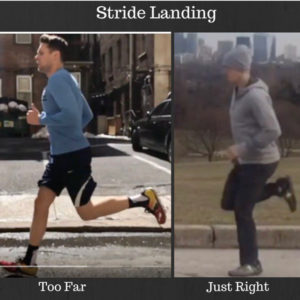
As we have covered the overstride will put your body in a compromised position that can lead to extra motion and injury. When you pull your foot under your butt, you will instantly create a shorter stride.
Engage larger muscle groups
Running is about withstanding fatigue. When your muscle fibers begin to fatigue, they will cease to fire and shut down. Encourage more muscle fibers in your running stride you have more muscle to train for endurance.
Build a well-rounded muscle structure
Runners can become “quad dominant.” Quad Domination sounds awesome, but in reality, it is an imbalance.
Learning to pull through your hamstring and glutes will build balance and reduce injury.
Most runners can barely flex their hamstrings.
Try it now. Put your hand on the back of your leg and flex. Now, put your hand on your quads?
Which body part felt more firm?
If it is your quads by a noticeable margin, then you may have some imbalance.
How to Pull
Imagine, a string on your heel that runs directly through your body and out through the top of your head. When you pull the string straight up, your heel will lift under your butt. This is the correct position for your pull.
Disengage your Hip Flexor
Put a hand on your hip flexor as you pull. If you lift your knee to high, you will feel a pronounced contraction through your hip flexor. When you “pull” correctly the contraction will be significantly decreased.
Drills To help Your Pulling
Learning to pull takes mindfulness and repetition. Do two of the exercises below before your run 3-4 times a week. During your run, think about your heel lifting under your butt.
Pull Specific Drills
Wall Pull Drill
Switch Support
Skipping Pull
Drills Hamstring Development
To get the most out of your pull and to correct imbalance you will need to develop strong hamstrings. Do two of the strength exercises two days a week.
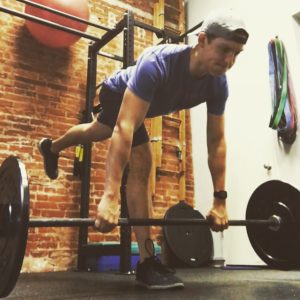
Partner Hamstring curls GHD Hamstring Curls
Elevated Glute Bridge
RDL
Pulling is a critical piece of running form. Learn how to utilize the pull, and you will be ready for long-term running improvement.
